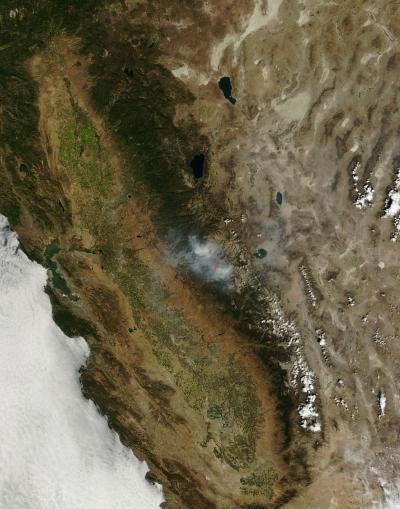Inciweb.org updates the Rim Fire with this information: "Firefighters will face continued hot and extremely dry conditions. Shifting winds coupled with low humidity will provide conditions for active fire behavior. Pockets of unburned vegetation within the fire perimeter will continue to burn creating the potential for spot fires across containment lines. Today's top priority is to contain all spot fires especially along Tioga Road. Firefighters will continue to patrol mop up and monitor lines while maintaining structure defense. Yesterday firefighters responded to a new 4-acre fire near Long Barn. The fire has been contained and will be monitored today. Stagnate air over the fire area will cause a general haze and poor air quality all day."
NPR reports: "The Rim wildfire that began three weeks ago today is now 80 percent contained, officials say, but it has burned more than a quarter of a million acres, and it may continue to grow, thanks to low humidity and other conditions. Air quality concerns have led to warnings hundreds of miles away, according to NBC News. Officials say a shift in wind direction could help clear out the smoke on Monday. The Rim blaze has torched 385 square miles, making it the third-largest wildfire in California's history."

The Rim wildfire that began three weeks ago today is now 80 percent contained, officials say, but it has burned more than a quarter of a million acres, and it may continue to grow, thanks to low humidity and other conditions.
(Photo Credit: NASA image courtesy Jeff Schmaltz LANCE/EOSDIS MODIS Rapid Response Team, GSFC. Caption by Lynn Jenner with information from inciweb.org and NPR.)
In this natural-color image collected by the Moderate Resolution Imaging Spectroradiometer (MODIS) aboard NASA's Terra satellite, it does appear that the smoke has stopped its northeasterly direction and is staying concentrated over the burned area. This image was taken on September 08, 2013. Actively burning areas, detected by MODIS's thermal bands, are outlined in red.
Source: NASA/Goddard Space Flight Center